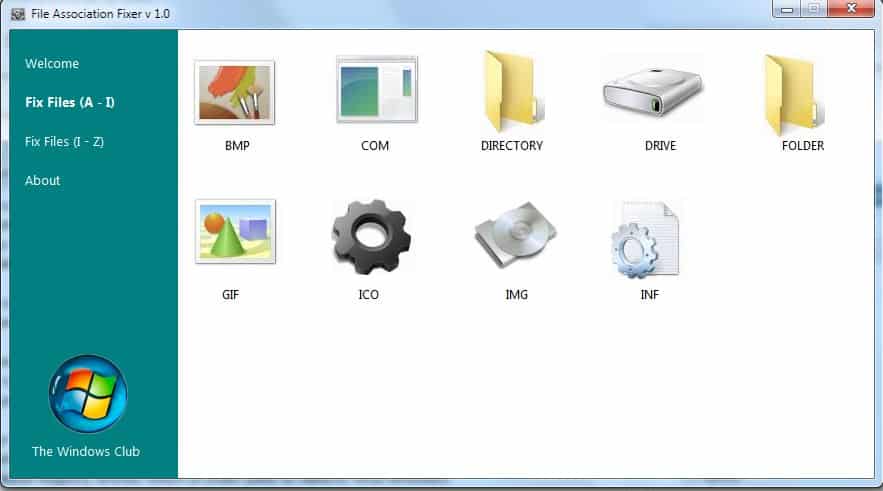Fix File Associations After Virus Attack

File Association Fixer is a free program for Microsoft Windows devices that you may use to repair broken or modified file extension associations.
A successful computer virus attack can cause a variety of issues on the affected computer system. Files may be transferred to third-party servers, ransomware may encrypt important files, files may get deleted, and a variety of other things may happen.
Some malware changes system settings and preferences to improve its chances of remaining undetected.
It is fairly common for instance that malware disables system tools like the Windows Task Manager or Registry Editor, and that it may also change file associations so that some programs cannot be run anymore or open with different applications.
File Association Fixer
File Association Fixer is a free portable software for the Windows operating system that can fix broken file associations. A file association links a file type, like exe or jpg, to a program. This program is the default program the file is executed with. If you double-click on files, the associated program is used to run it automatically.
It can be very problematic if a virus modified for instance Registry files or folders so that they cannot be opened with the default program. A reg file is a Registry file that can be used to add or remove Registry entries which is often used to remove virus leftovers.
File Associations Fixer displays a list of file types sorted alphabetically on launch.
A click on any of the offered file types will reset the file association to the default program. This has to be done for every file type that the user wants to fix.
A restart is required after that operation for the new file associations to be loaded by the Windows operating system.
File Association Fixer can be a helpful program after a virus attack. The computer program is compatible with Windows Vista and Windows 7 and can be downloaded from the Windows Club website.
File Association Fixer 2

A new version of File Association Fixer has been released. It is compatible with Windows 10, 8.x and 7, and works pretty much like the previous version.
It displays a list of file types when you click on the "fix files" option in the program interface. You may select some or all of the file extensions and then the "fix selected" button to start the repair process.
From what we could gather, all file associations are reset when you hit that button.


























I can’t get past your comment. What language are you using?
Grow up.
Hey there, the person had a legitimate question. So what if he misspelled a few words. For all you know he’s dyslexic. Even if he isn’t there is no need for you to flame him. You, sir, are the one who needs to grow up.
well said lucius
hi, I cant get past the screen whotch askes me Whitch file do you want to use to open this file, I have a choise of Word, media or enet? help
I don’t know about this.
I installed it and then tested it on text files (which I had previously modified). But I did not see any changes.
Was I supposed to reboot to see the changes?
I don’t like how this program doesn’t tell you what changes it is going to make or has made.
This is something nice to have for someone with no OS CD/DVD or expertise to install an OS from scratch.
On the rare occasions that I “think” I caught a virus, I usually do a low level format of the harddisk and reinstall the OS and programs – just to be safe. Restoring a ghost image is also an option, but I have usually built up such a mish-mesh of program hooks that it’s better to wipe the slate clean – the programs I’d tried out and don’t pan out don’t get reinstalled and their little hooks don’t get put back onto the system.